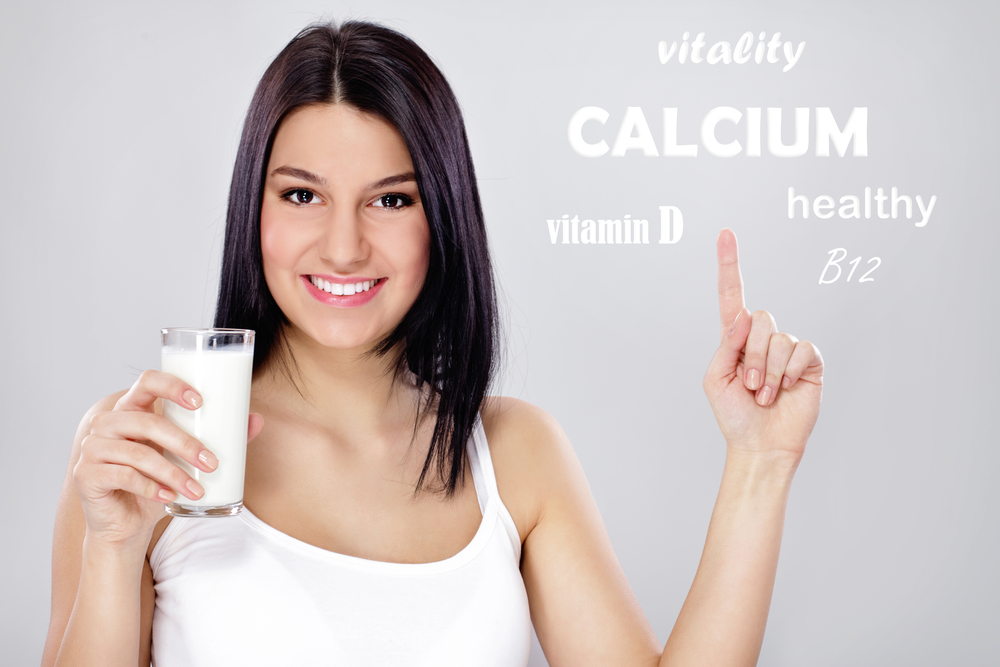Calcium is one of the most abundant elements on earth. It’s found in rocks and minerals all over the place. Calcium is an essential mineral for human health. It’s primarily stored in your bones and teeth. (And it’s what makes your pearly whites so strong).
Calcium is the most abundant mineral in your body. This is ideal because you need calcium for some vital functions.
Calcium helps:
- Carry messages between your brain and the rest of your body;
- Your nerves and muscles to move;
- Transport enzymes and hormones through your blood to where they need to go;
- Keep your muscles, nerves, and blood vessels functioning well; and
- Plays a vital role in maintaining healthy blood pressure.
Your heart and other muscles in your body also depend on calcium to receive signals from the nervous system and contract. Without calcium, your heart wouldn’t work!
How Much Calcium Do You Need
National Institutes Of Health Recommended Daily Intake
Adults 18 years and older should consume 1,000 to 1,200 mg of calcium per day.
You need 1,300 mg of calcium per day during your teenage years, pregnancy, and while you are lactating. And that women who have gone through menopause may also need to increase their calcium intake.
But these numbers may be high. For adults over age 19 The National Health Service of Britain recommends 700 mg of calcium per day for adults over the age of 19.
How much calcium you need apparently is in question. However, you do know that your body needs calcium to function.
Plant-Based, Calcium-Rich Foods
Below are some of the most naturally calcium-rich plant foods:
1. Seeds
- ½ cup sesame seeds = 350 mg calcium
- 1 ounce chia seeds = 180 mg calcium
If you would like a spread, tahini provides 130 mg of calcium in only 2 tablespoons. This is approximately 10% of the recommended daily intake for someone in the United States and 20% for someone in Britain.
The amount of calcium in seeds and their butters varies depending on the type.
Sesame seed butter, or tahini, contains the most magnesium out of all the foods listed, providing 130 mg per 2 tablespoons, or 13% of the RDI (recommended daily intake). While 20 grams of sesame seeds only provides 2% of the RDI, the same quantity of pumpkin seeds provides 14% of the RDI.
These seeds contain a decent amount of fiber, providing around 5-6% of the required daily intake in just 2 tablespoons.
Nuts and seeds contain many of the same healthy nutrients. These include fiber, protein, healthy fats, vitamins, minerals, and beneficial plant compounds. In addition to being linked to health benefits like reduced inflammation, blood sugar levels, and risk factors for heart disease.
Some seeds and their butters contain high levels of calcium, providing up to 13% of the recommended daily intake. Nuts and seeds are similar in that they are both rich in healthy fats, protein, and fiber. They not only improve your health but may also protect you from diseases.
2. Beans
- ½ cup navy beans or baked beans = 60 mg calcium
- ½ cup kidney beans = 75 mg calcium
- ½ cup black beans = 160 mg calcium
Beans are incredibly versatile. They’re affordable too, at around $2 a pound when dry, or $2 a can. Beans are a versatile ingredient that can be added to a variety of dishes, including soups, salads, burritos, pasta, casseroles, tacos, and pizzas.
3. Lentils
- 1 cup lentils = 80 mg calcium
Lentils are inexpensive and shelf stable. Red lentils make a great addition to soups like dahl, while green lentils are perfect for salads. Brown lentils can be used to make a delicious lentil loaf.
4. Almonds
- ½ cup raw almonds = 80 mg calcium
- 2 Tbsp almond butter = 80 mg calcium
If you’re looking for a nut butter alternative to peanut butter, almond butter is a great option. You can make it yourself with a high-speed blender or food processor. You can add raw almonds to smoothies, muffins, and pancakes, or just eat them alone.
5. Low-Oxalate Leafy Greens
- ½ cup of collard greens = 300 mg calcium
- 1 cup bok choy = 60 mg calcium
- 1 cup chopped kale = 80 mg calcium
Leafy greens that contain oxalates can prevent calcium from being absorbed. Although spinach, Swiss chard, and beet greens are highly nutritious vegetables, their high oxalate content can make them poor sources of calcium.
To reduce oxalate in foods you can boil them. Boiling releases the oxalate, discard the water. Steaming can also remove some oxalate. It just doesn’t do as good a job as boiling. The absorption of calcium from high-oxalate vegetables is low, at around 5%.
For example, 1/2 cup of cooked spinach, bok choy, turnip, mustard, or collard greens provides 84-142 mg of iron, or 8-14% of the Recommended Daily Intake.
Other vegetables which contain high levels of calcium include okra, kale, cabbage, broccoli, and Brussels sprouts. You will be getting around 3-6% of the RDI if you consume 1/2 cup (60-80 grams) of this.
While vegetables contain many nutrients, they also contain antinutrients such as oxalates. If oxalates are consumed in large quantities, they can bind to calcium in the gut, making it more difficult for the body to absorb the calcium. If you ingest too much oxalate in rare cases it lead to kidney stones.
Turnip greens, broccoli, and kale are low in oxalates and are therefore better vegetables to eat than spinach, beet greens, and Swiss chard, which are high in oxalates.
Boiling changes the structure of the oxalate, making it less available for absorption. One way to reduce the amount of oxalate in your body is to boiling, which can change the structure of the oxalate and make it less available for absorption. It seems that microwaving is more effective than steaming or baking.
Vegetables with a low to medium oxalate content, such as turnip greens, broccoli, and kale, are a good source of calcium that your body can absorb easily. Boiling them will further boost absorption.
Need to add more greens to your diet? Green Spectrum captures a beautiful collection of 15 different superfoods and greens, including sea plants, field grasses (like wheatgrass) and garden vegetables. These nutrient-dense green ingredients may support healthy alkalinity and oxygen levels, which can also help support healthy blood glucose levels.
6. Soy
- 100 grams of tofu = 175 mg calcium
- 1 cup organic soy milk = 100 mg calcium
- ½ cup edamame = 60 mg calcium
Soy and the products made from soy are a good source of calcium. However, soy calcium is not as easily absorbed as calcium from cow’s milk.
Soybeans and soy foods may reduce the risk of cardiovascular disease, stroke, coronary heart disease (CHD), some cancers as well as improving bone health.
Organic soy foods are great for many recipes. Try using extra-firm tofu in your next stir-fry, pasta dish, tofu scramble, or sandwich. Try silken tofu in smoothies, dips, and sauces.
Edamame can be found in the frozen section of many stores, whether in pods or already shelled. Add edamame to salads, buddha bowls, or homemade hummus. You can drink soy milk plain, or add it to cereal or use it for baking, like you would regular cow’s milk.
7. Oranges
- 1 medium navel orange = 80 mg calcium
Oranges are often praised for their high vitamin C content, but they are also a good source of calcium. I love eating oranges raw because they are so juicy and delicious.
8. Broccoli Raab (Rapini)
- 1 bunch cooked broccoli raab = 515 mg calcium
While broccoli is a good source of calcium, broccoli raab is an even better source. It can be boiled, sauteed, or seasoned and roasted.
9. Dried Figs
- 4 dried figs = 55 mg calcium
Dried figs can enhance the flavor of baked goods such as muffins, breads, and scones. Some people even add them to smoothies.
10. Blackstrap Molasses
Blackstrap molasses is a sweetener with a nutritional punch.
One tablespoon (15 ml) of calcium covers around 18% of your daily calcium needs.
The sugar cane has been boiled three times to create this product. It has more vitamins and minerals than sugar, including 179 mg of calcium, which is 18% of the RDI, per tablespoon.
1 tablespoon (15 ml) of blackstrap molasses contains enough nutrients to cover 5-15% of the daily requirements for iron, selenium, vitamin B6, magnesium, and manganese. Though it is high in sugar, blackstrap molasses can be eaten in moderation.
While blackstrap molasses does contain a high amount of sugar, it is also a good source of vitamins and minerals.
11. Seaweed
Seaweed is a great source of calcium.
According to the USDA National Nutrient Database, two tablespoons of wakame comes with a healthy dose of manganese, magnesium, and calcium.
A single cup of wakame provides 12% of the recommended daily intake of iodine. It is common to find this in Asian supermarkets or sushi restaurants.
Kelp, a type of seaweed, is another popular option. It can be eaten raw or dried. One cup (80 grams) of raw kelp provides around 14% of the recommended daily intake. Dried kelp flakes can also be used as seasoning.
Although seaweed has many health benefits, it may also contain high levels of heavy metals. Some types of seaweed can have high iodine levels. Iodine is needed for the proper function of your thyroid gland but too much of it can be harmful. You shouldn’t consume too much seaweed or eat it too often.
Some types of seaweed are rich in calcium. Some seaweed may contain heavy metals and iodine, which can have negative health effects.
12. Some Grains
Grains are not typically associated with being a source of calcium. Yet, some varieties contain significant amounts of this mineral. Amaranth and teff are two examples of gluten-free ancient grains that provide around 12% of the RDI per cooked cup (250 grams).
Both quinoa and oats are rich in fiber and can be used in a variety of different dishes.
You can make porridge out of teff or add it to chili, and amaranth makes a good replacement for rice or couscous. Both oats and barley can be ground up into a flour to use as a thickener for soups and sauces.
Some grains provide significant amounts of calcium. Amaranth and teff, for example, contain around 12–15% of the RDI.
Factors Affecting Calcium Absorption
If you have trouble getting enough calcium, it might not be from not consuming enough calcium. There is also the possibility that you are not assimilating well.
Several things can interfere with how much calcium you absorb:
Sodium
Eating too much sodium. Salt can increase calcium loss. If you are worried about high sodium intake, stay away from processed and packaged foods with a lot of salt, rinse canned beans and vegetables before eating them (unless they don’t have added salt), and don’t add salt to your food when cooking if you don’t need it.
You should consume less than 1,000 to 2,000 mg of sodium per day, according to many experts.
Smoking
Smoking and tobacco use. Smoking and using tobacco can lead to calcium loss, which then reduces bone density and increases the risk of fractures.
Other factors that are common among smokers and can contribute to health problems are things such as not getting enough physical activity, menopause occurring earlier than average, having a poor diet, or drinking alcohol.
Protein Sources
Eating animal-derived protein. Eating a lot of animal protein can have a negative effect on bone health by reducing calcium levels and increasing excretion.
Eating protein from plants does not seem to have the same effect. Leafy greens are a great source of calcium, and they are absorbed at significantly higher rates than calcium from dairy.
The absorption rates for calcium in Brussels sprouts and kale were 64% and 50% respectively, while the absorption rate for calcium in cow’s milk was only 32%.
Nutrient Deficient
Not eating enough of other nutrients. In order for your body to properly absorb and use calcium, you need other nutrients including vitamins D, C, K, E, magnesium, and boron.
Getting your calcium only from oxalate-containing sources. Eat spinach, rhubarb, beet greens, and Swiss chard for their many other healthy nutrients, but not for their calcium content, because oxalates can inhibit calcium absorption.
Make sure to consume other calcium-rich foods in addition to the ones mentioned above to get the amount of calcium you require.
Conclusion
Calcium is important for the bones, muscles, circulatory and nervous systems. Despite the fact that many people don’t get enough of this nutrient, vegans are included in this group.
Dairy is not the only source of this mineral. Calcium is also naturally present in many plant foods, such as grains, legumes, fruits, vegetables, nuts, and seeds. You’ll even find it in seaweed and blackstrap molasses.
What’s more, several foods are fortified with calcium. Since variety is key to meeting your calcium needs on a vegan diet, you’ll need to include a range of calcium-rich foods in your diet.
It is essential to consume enough calcium as it is vital for healthy bones, hearts and carrying out various functions in the body.
So it would be beneficial for your body to consume calcium that comes from plants. There are plenty of other minerals and nutrients in them as well… They’re also cruelty-free and better for the planet!









